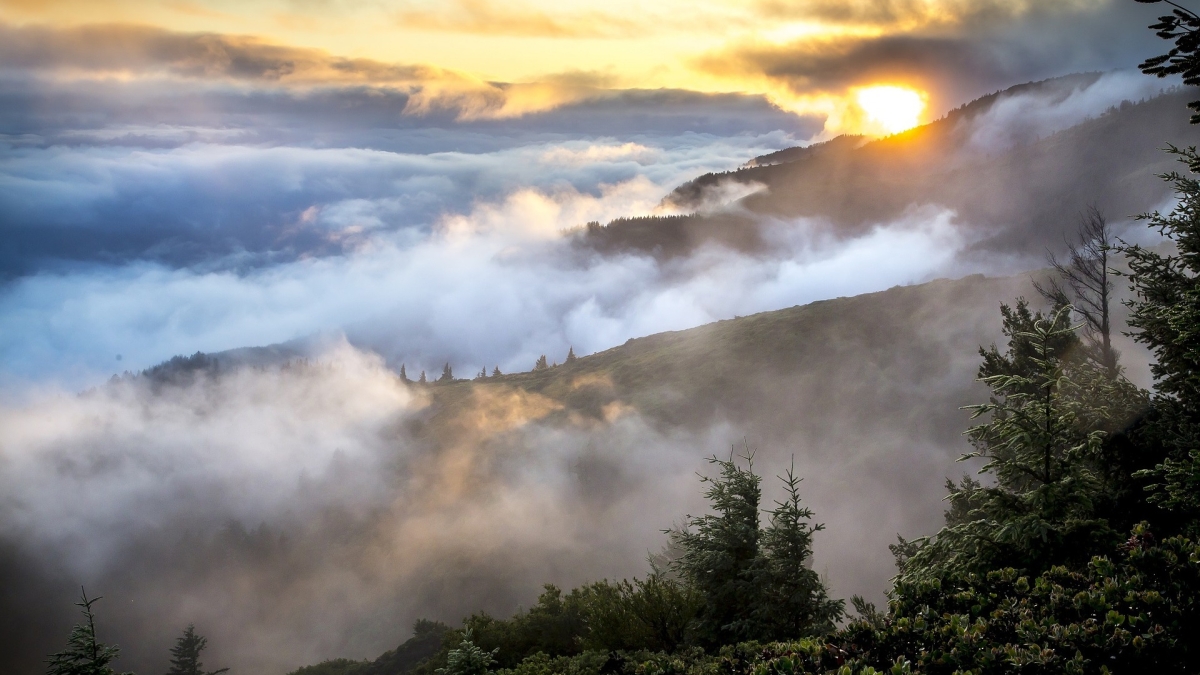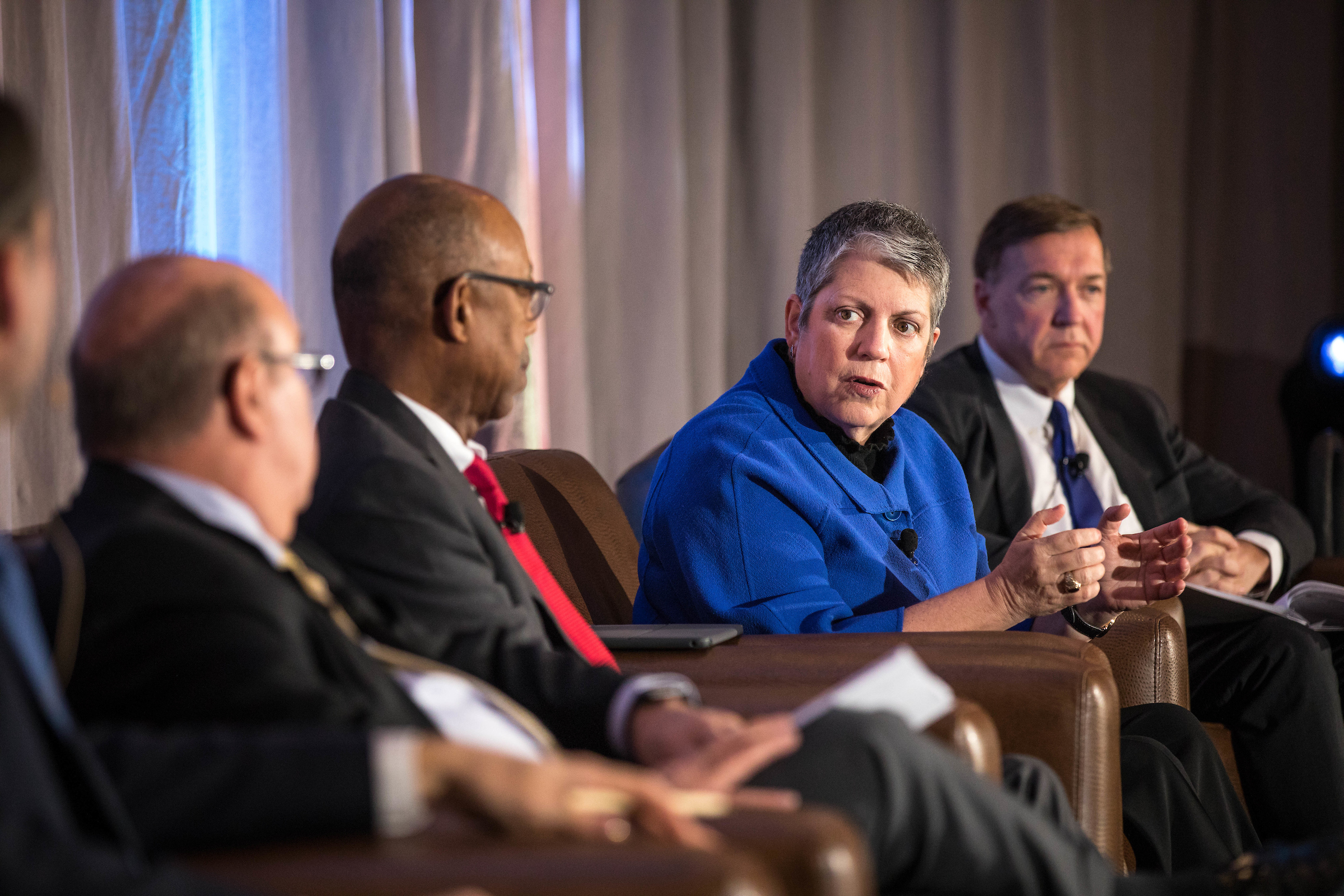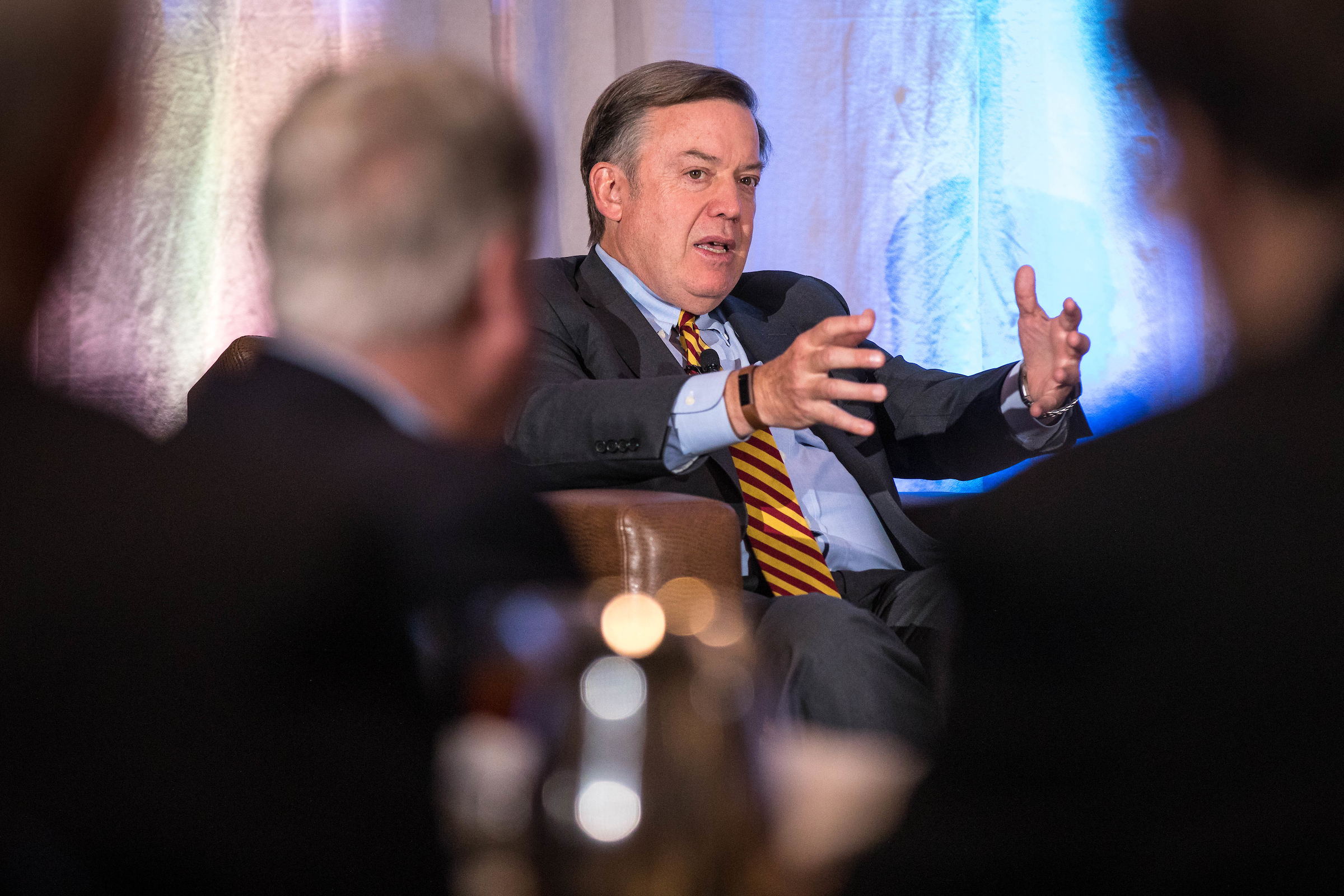Arizona State University is part of a new coalition of 13 leading research universities that will help communities achieve their climate goals and accelerate the transition to a low-carbon future.
The group, called the University Climate Change Coalition, or UC3, includes distinguished universities from the United States, Canada and Mexico. The universities have committed to mobilizing their resources and expertise to help businesses, cities and states achieve their climate goals.
Formation of UC3 was announced today at the Second Nature 2018 Higher Education Climate Leadership Summit, being held in Tempe.
Original members of UC3 are: ASU; California Institute of Technology; Instituto Tecnológico y de Estudios Superiores de Monterrey; La Universidad Nacional Autónoma de México; The Ohio State University; The State University of New York (SUNY) system; The University of British Columbia; The University of California system; University of Colorado, Boulder; University of Maryland, College Park; The University of New Mexico; The University of Toronto; and The University of Washington.
Among initial specific UC3 goals are:
Cross-sector forums: Every UC3 institution will convene a climate change forum in 2018 to bring together community and business leaders, elected officials and advocates. Forums will be tailored to meet local and regional objectives focusing on research-driven policies and solutions to assist various communities.
Coalition climate mitigation and adaptation report: A coalition-wide report, to be released in late 2018, will synthesize the best practices, policies and recommendations from all UC3 forums into a framework for continued progress on climate change goals across the nation and the world.
All UC3 members have already pledged to reduce their institutional carbon footprints, with commitments ranging from making more climate-friendly investments to becoming operationally carbon neutral in line with the Paris Climate Agreement and the Under2MOU for subnational climate leaders.
“While college and university campuses across the country are, in aggregate, responsible for only about 3 percent of the total greenhouse gas emissions emitted in the U.S., we are educating 100 percent of our future political, business and social leaders,” ASU President Michael Crow said. “This fact alone places significant accountability on higher education and its leaders to take action.”
UC3 was formed at the request of the University of California system and its president, Janet Napolitano.
Former Arizona governor and current University of California President Janet Napolitano raises a few issues her schools face at the announcement of the creation of UC3.
“The University of California system is thrilled to partner with this group of preeminent research universities on an issue that has long been a major strategic priority for all of our institutions,” Napolitano said. “No one is better positioned than we are to scale up research-based climate solutions.”
Harnessing the unique resources and convening power of member institutions, the coalition will work to inform and galvanize local, regional and national action on climate change. Coalition members will bring to these efforts a critical body of expertise in areas including advanced climate modeling, energy storage systems, next generation solar cells and devices, energy-efficiency technologies, biofuels, smart grids, regulatory and policy approaches, etc.
“The research university has played an important role in creating new knowledge, convening thought leadership, and serving as long-term community members,” said Timothy Carter, president of Second Nature. “By applying these strengths to locally relevant climate challenges, we see transformative potential for accelerating climate solutions in these locations in a way that couldn’t happen if the institutions and sectors continued to act on their own.”
Crow added Arizona State, which established the first freestanding School of Sustainability in the U.S. in 2006 and had the first degree program, has several other projects that focus on dealing with carbon dioxide in the atmosphere and limiting future emissions.
ASU President Michael Crow speaks at the announcement of the creation of University Climate Change Coalition, or UC3, at the start of the closing plenary at the Higher Education Climate Leadership Summit at the DoubleTree by Hilton Phoenix-Tempe, on Tuesday, Feb. 6.
These efforts include:
• ASU is working to reach its commitments to eliminate greenhouse gas emissions from building energy sources by 2025, and from all sources by 2035. Between 2007 and 2017, ASU reduced emissions per on-campus student by 46 percent.
• ASU has one of the largest university solar installations in the U.S., with 88 solar installations — more than 82,000 photovoltaic panels — that generate 24.1 MWdc, which, combined with ASU’s off-site solar fulfills 30 percent of ASU’s electricity needs.
• ASU has a power purchase agreement with Arizona Public Service at the Red Rock Solar Plant near Picacho Peak, Arizona. The agreement allows ASU to secure solar power from the plant during a 20-year span and adds approximately 29 MWdc to ASU’s solar generating supply.
• ASU researchers, led by Klaus Lackner in the ASU Center for Negative Carbon Emissions, are developing a device that removes carbon dioxide from the air for re-use or sequestration.
• The Center for Carbon Removal, in partnership with ASU and several other research institutions, launched a new industrial innovation initiative to develop solutions that transform waste carbon dioxide in the air into valuable products and services. The Initiative for a New Carbon Economy is focusing on rethinking the climate challenge as a new economic opportunity, and figuring out how to reuse carbon in real, valuable and lasting ways.
• ASU researchers have developed a software system called Hestia that can estimate greenhouse gas emissions across entire urban landscapes, down to roads and individual buildings. The software provides high resolution maps identifying CO2 emission sources in a way that policymakers can utilize and the public can understand. Hestia can provide cities with a complete, three-dimensional picture of where, when and how carbon dioxide emissions are occurring.
Top photo courtesy pixabay.com
More Science and technology

Indigenous geneticists build unprecedented research community at ASU
When Krystal Tsosie (Diné) was an undergraduate at Arizona State University, there were no Indigenous faculty she could look to in any science department. In 2022, after getting her PhD in genomics…

Pioneering professor of cultural evolution pens essays for leading academic journals
When Robert Boyd wrote his 1985 book “Culture and the Evolutionary Process,” cultural evolution was not considered a true scientific topic. But over the past half-century, human culture and cultural…

Lucy's lasting legacy: Donald Johanson reflects on the discovery of a lifetime
Fifty years ago, in the dusty hills of Hadar, Ethiopia, a young paleoanthropologist, Donald Johanson, discovered what would become one of the most famous fossil skeletons of our lifetime — the 3.2…


